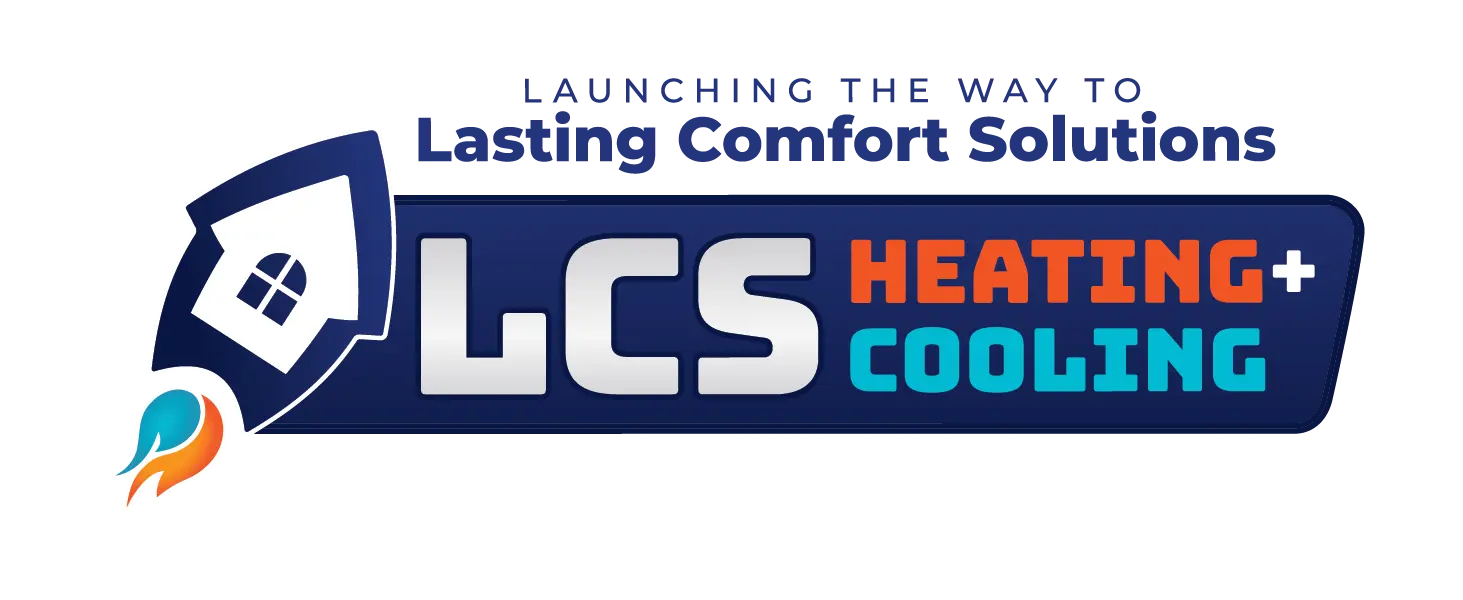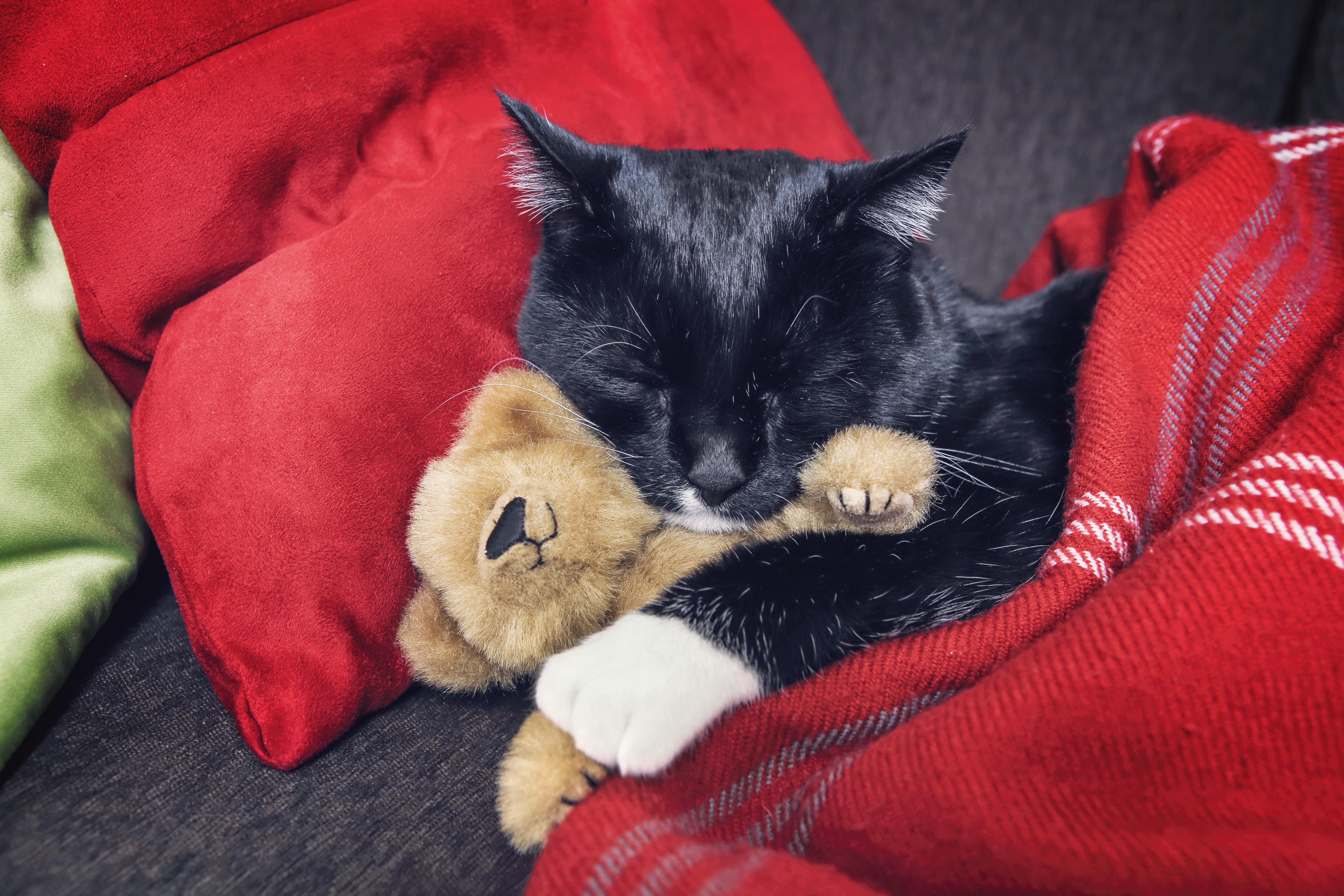The cool air, turning leaves, and arrival of apple cider at the store mean that autumn’s official start is just around the corner. At home, this seasonal change can quickly translate into higher energy bills. Fortunately, there are a few ways to lower these costs. Staying comfortable in your home—at an affordable rate—is relatively easy when you opt for energy-efficient solutions.
Schedule Your Heating Tune-Up
This time of year, the biggest energy bills for your home relate to heating. In order to get the best efficiency rating for your furnace, it needs to be able to run smoothly. Any problems during this season can be a real issue for your overall costs. But you can catch issues early on by scheduling your heating tune-up. This service helps ensure that all of your system’s components are within the normal operating range. That way, if any part is having trouble, you can have the option to be pro-active for a repair or replacement. And this could save you a service call down the road!
At LCS Heating & Cooling, we offer Annual Maintenance Plans to help keep service and energy costs low year-round. Getting notified of any potential problems lets you stay up-to-date on your furnace’s needs. When you look ahead to winter, no one wants to be caught without heat. A quick visit from your local HVAC company can help you avoid that inconvenience before the cold snap.
Other Home Efficiency Tips for Fall
Once your furnace is in order, you can still work to lower costs in other ways. Adding these efficiency tips to the mix can help you finish the year with extra energy savings. Try them all for the biggest benefits, or just stick to a few to get the ball rolling.
1. Change your air filter
We always recommend preventative maintenance to prep your home. But if you do nothing else this season, replace your air filter. It’s important to swap out your 1-inch air filter every 1-2 months. (The larger 4 to 5-inch media filters can last for 6-12 months.) This simple step goes a long way for your unit’s overall efficiency. A dirty filter can put a lot of strain on your heating unit and make it harder for the warm air to circulate through your home.
2. Warm up with the sun
The days and nights are getting colder, but the sun is still shining. Make the most of sunny days by opening your curtains to let this natural heat inside. South-facing windows tend to have the most impact. Just keep your curtains closed when the sun is set to hold in the warmth, then pull them back in the morning to create some sunny spots. This will help boost your home’s temperature. Plus, it gives your dog or cat a great place to nap!
3. Adopt a smart thermostat
When you want to go above and beyond for your home energy savings, a new thermostat can be a real winner. A programmable thermostat is a great investment because it lets you set schedules for your heating and cooling programs. You’ll get more efficient ratings, for instance, when you tell the heat to drop slightly in the evening, or when you’re away at work. A smart thermostat is even better because you can control your home’s settings right from your phone.
4. Grab some free LED bulbs
Changing your old lightbulbs to LED versions is a fantastic way to cut costs on your energy bills because they use up to 66% less energy. They even last over 20 times longer than standard bulbs. The best part about these updates? You can get LEDs for free! The Free LED Program from Duke Energy will ship bulbs right to your home. The potential savings could be upwards of $100, so there’s no reason to pass up this deal.
5. Watch for home air leaks
Feeling a cold air draft around your windows or outside doors indicates a heating leak. Don’t let these spots add to your energy bill. Adding fresh caulk around these borders or replacing the weatherstripping can prevent your home’s heat from escaping. The other thing to check is your fireplace damper. Make sure to always keep this closed when your fireplace isn’t in use. Accidently leaving it open is just another way to lower your indoor temperature.
Take this advice, and you’re sure to have a more energy-efficient home for the colder months. What’s more, you’ll be able to enjoy upgrades like a smart thermostat during the warmer months as well! If you have questions about other energy savings solutions for your home, give LCS Heating & Cooling a call at (317) 238-3961. We’d be happy to help you out!
September 17, 2018
During the hot summer months, most homeowners don’t expect to find ice on their air conditioning unit. Unfortunately, this issue is more common than you might think, and having ice on your AC is a sure sign that something’s not right. Reviewing the likely causes can help you get your equipment back to its normal working state.
Problems with AC Ice
Once you notice that there’s ice on your unit, you need to turn your AC off. This can help prevent the situation from getting worse. Assuming it’s warm outside, this will help get the ice to melt, too. Let your unit thaw completely, then work through these different scenarios to identify the underlying cause.
1. Poor Airflow
If you’re lucky, the ice on your AC is the result of a more minor issue. After the ice has thawed, the first thing to do is to check is your air filter. Sometimes ice can form on air conditioners when there is poor airflow, so replacing your old air filter with a new one might be all it takes to get your unit running smoothly again.
One of the problems with dirty filters is that they put more stress on your evaporator coil. Reducing airflow over your evaporator coil can then cause your equipment’s temperature to drop below freezing. Consequently, humidity will start to collect around your AC and turn into ice.
Hopefully a new air filter will be enough to remedy the situation. To test this, wait for the ice to melt and then turn your air conditioner on again to see if the ice returns. If it doesn’t—then you’re all set. But if the ice comes back, there might be another problem.
2. Dirty Evaporator Coil
When ice forms even with a new air filter, you might be dealing with a dirty evaporator coil. This can happen with older units or AC equipment that hasn’t had regular maintenance.
In this case, you’ll want to turn the equipment off again and call on an expert to come clean the evaporator coil. Unfortunately, this isn’t something that homeowners can do on their own. The process requires a tech to fully removing the indoor coil to clean it, before re-installing.
Continuing to run your AC unit when this part isn’t working properly can cause a chain reaction of other issues. Rather than risk damage to your compressor or other AC parts, it’s best to call your local HVAC company to take a closer look. Odds are, they’ll be able to remedy the situation pretty quickly with by either cleaning your evaporator coil. Otherwise, they might have to take a look at your refrigerant levels.
3. Low Refrigerant
Systems that have low refrigerant aren’t able to keep the evaporator coil within the proper temperature ranges. If you have an issue with refrigerant—and not the coil itself—your AC unit probably has a leak.
Simply topping off the refrigerant isn’t usually enough to fix the issue. In fact, if you just add refrigerant without testing for a leak first, you might just be wasting money. Depending on the leak size, it could take several months of just a couple of days to have the problem come back. So, it’s a risk. (Plus, companies don’t provide a warranty on refrigerant, especially without a leak search and repair.)
For these reasons, it’s important for your HVAC technician to check for leaks whenever your refrigerant levels are low. If your tech can find the leak and repair it, you’ll be able to avoid other costly replacement parts. A detailed review of your system can help you figure out what’s wrong.
4. Broken Motors
The last reason you might have ice on your AC unit is if a blower motor or your fan motor is going out. These issues can also cause your system to freeze up due to restricted air flow. (Though this is different than poor air flow just from a dirty filter.) As with dirty evaporator coils and refrigerant leaks, if your motor has gone out, you’ll need an HVAC tech to come by for some repairs.
Time for AC Repair?
As soon as you realize that there’s ice on your AC unit, remember to turn your system off. Continuing to use your home’s air conditioning can just make matters worse. Replace your air filter as the ice thaws. That way, if the ice returns, you’ll know you need to call your local HVAC company to take a peek inside the unit.
If you’re located around the Indianapolis area, know that our team at LCS Heating and Cooling has got your back. We’re here to help you out whenever you notice issues with your AC in the summertime. Hopefully the ice on your AC is just the result of poor airflow from a dirty filter. But if the problem is more complicated, our team will make it right.
We know HVAC repairs can be annoying to deal with, but our expertise can get your home back to normal without too much downtime. For any questions about your air conditioner repairs and other function, just call LCS Heating and Cooling at (317) 238-3961. Summer is supposed to be enjoyable—we’ll help you keep it that way!
June 28, 2018
leaves in fall and the brisk air in winter. Come spring and summer, though, it’s another matter entirely. Poor indoor air quality during this time of year can feel either humid and stuffy, or terribly stale. A lot of people will crack open a window to try to fix the situation. But there’s a much better (and more efficient!) way to address your stale air problems.
Why Does the Air Feel Stale?
Stale air is created in a number of different ways. Some of the most common causes are from lack of ventilation and various contaminants. The odors and allergens from commercial cleaning products and dust mites are a big no-no for fresh indoor air. But without a good filtration system in place, it’s hard to keep these issues at bay. They just keep adding up to create that lingering stale air vibe.
Another reason your air can feel stale is because of improper humidity levels. Over time, poor circulation can make your indoor air feel even more stuffy. You need to introduce fresh air into your home and workspace to keep them from turning into “stale and stagnant” environments. Fortunately, adjusting your indoor humidity and making sure your ventilation system is efficient and clean can go a long way. A little maintenance or a couple upgrades are usually all it takes to get clean indoor air every day of the year!
4 Ways to Fix Stale Air
There’s no sense to live with uncomfortable indoor air. In fact, those conditions can be a real problem for productivity. Multiple studies have shown that poor ventilation reduces cognitive functions. To feel your best, it’s important to breathe good, clean air. You can help get your indoor air quality up to par with these solutions—listed in order of Okay, Good, Better, and Best:
1. Open a window—but not for too long.
If you’re struggling with stale air, you can always open a few windows. Just remember, this won’t be a real long-term solution. For one, this can add a bunch of sticky humidity to your indoor air. Opening the windows can also let a whole bunch of allergens fly inside. Pollen, dust, and other unwelcome odors (the neighbor’s lawnmower exhaust, for example) can slip into your space without the right filtration. Then you’re stuck with a bunch of other problems! Plus, leaving your windows open while the AC is running can be real energy waste. The money spent on cooling your space then, essentially, just floats outside.
2. Turn on the fan.
Another option is to put a new air filter into your HVAC unit and turn on your ceiling fan. Better yet—put your thermostat on its “Fan Auto” setting! Then you can recirculate the air without introducing new allergens to the mix. The counterclockwise direction on your fan can help push the cool air down to keep the space feeling fresh. This setup can be a great “quick fix” to kick off the new season.
3. Change your air filter.
A better way to improve your air is to put in a new filter. This can allow your AC to work more efficiently. Remember: 4 to 5-inch media filters should be swapped out every 6-12 months, but 1-inch air filters should be changed every one to two months. If you live in an area that has lots of construction going on or fields being plowed, you might need to change your filter more often. Putting in a new filter every month, or even every couple week might be necessary depending on your conditions. If you haven’t checked yours in a while, it’s probably due for a change.
4. Invest in a new filtration system or dehumidifier.
The best way to fix stale air problems is to clean up your indoor air around the clock. Homes and office spaces that are tightly-sealed sometimes need special systems installed. The right HVAC equipment will work to improve your indoor air by cycling it with filtered air from outside. But you might also want a new air cleaner or an add-on unit to tackle humidity issues. If you’re sick of stale air, these are great upgrades to help you breathe easy. Talk with your local HVAC company to find the best energy-efficient system for your layout!
Schedule an Indoor Air Quality Review
For the ultimate spring cleaning, don’t forget about your indoor air quality. The air we breathe affects us every minute of every day, so it deserves special attention. Ventilation problems with older homes and buildings can definitely take a toll. These environments can even cause different health issues, including headaches, eye irritation, and coughing. Typically, these problems are grouped together and referred to as sick building syndrome. The same issues from poor ventilation can also show up in your home.
When changing your air filters and turning on the ceiling fan aren’t enough to fix your stale air problems, it’s time to call on your local indoor air quality professionals. A quick review of your existing ventilation can help determine any problems spots that need improving. An upgraded air cleaner, dehumidifier, or ventilation system might be all you need for a truly refreshing, healthy lifestyle! Contact LCS Heating and Cooling today to learn more.
March 21, 2018
Check-ups for your kids, any pets, and the car all have their purpose. You want to make sure everything is working as it should, and your preventative HVAC maintenance isn’t much different. Scheduling regular, preventative maintenance for HVAC equipment helps homeowners stay “in the know” on their system.
Before the seasons switch, make an appointment with your local HVAC company to make sure everything is okay with your cooling system. No one wants to wake up to a broken AC unit right when the weather starts heating up! Make sure your technician reviews the following on your system (and with you) for a job well done.
What’s Covered in Your Cooling Tune-Up?
Your annual maintenance process should always include a detailed review of the inside and outside components of your cooling system. It’s important to get an AC tune-up done once a year to prevent unnecessary issues. Scheduling your service during the cooling season can help you get the best benefits!
There are many different technical parts to review in your unit. Testing each of these areas takes a little time, but going through them one-by-one will help your technician identify any air conditioner problems that may occur. If you can isolate errors to a single step in your system’s process, it will be easier to keep repair costs down and extend the lifespan of your AC unit. Your cooling tune-up should always include tests for:
- Check operating pressures and temperatures
- Superheat measurements
- Temperature drop at return and supply air
- Contactor condition and operation
- Proper operation of controls
- Wiring and electrical connections
- Fan and inducer motor voltage and amperage
- Function of capacitors and relays
If all of those tests are completed in good working order, your tech would then move on and perform steps for ongoing maintenance. Because dirty units won’t be able to run properly, these items are very important for every tune-up. A few more details can help keep your system running at peak efficiency:
- Lubricate blower motor, condenser fan, and other moving parts (if needed)
- Clear the condensate drain for overflow protection
- Clean outdoor condenser unit for proper airflow
The final steps on the check-list relate to customer care. Your technician should always be ready to review your key concerns about your AC’s operation and be able to address the following for a full-service review:
- Check thermostat and adjust (if needed)
- Evaluate air filters, and clean or replace (if requested)
- Review equipment condition and answer any questions
If your HVAC technician can complete the following, you will probably be all set for annual maintenance. As the old adage goes, “An ounce of prevention is worth a pound of savings!”
HVAC Savings with Annual Maintenance
Scheduling annual maintenance is also smart for homeowners looking to save money. Some HVAC companies offer special discounts for their annual maintenance clients. At LCS Heating and Cooling, these HVAC discounts are included in with your LCS Gold Star Membership or LCS Platinum Star Membership. Each membership comes with a monthly payment option—and tons of great savings.
Available for both residential and commercial customers, these memberships work to give you maximum efficiency for your heating and cooling tune-ups at the minimum cost. Both Gold and Platinum Star Memberships offer 10% off repairs, 15% off indoor air quality products and services, and discounted after-hours rates. If anything does go wrong with your unit, it’s great to be a member.
Gold Star Membership automatically gives you $20 off service calls, and even waives the service call with a paid repair over $300 during regular business hours. Platinum Star Membership includes a year’s supply of filters, plus a waived service call for any paid repair during regular business hours. Platinum members also get to participate in our special loyalty program. The longer you stay on the maintenance plan, the more benefits you receive. You can even earn up to $700 towards a full system replacement!
Quality HVAC Service with LCS Heating and Cooling
Your HVAC preventative maintenance and other air quality upgrades help keep your home comfortable and energy-efficient. (And the savings aren’t bad, either!) If you’re ready to give your HVAC units the care they need for a great, long-term performance, give us a call at (317) 238-3961. We’d love to talk with you about our HVAC Membership benefits!
Being pro-active will help keep your systems operating smoothly for years to come. Don’t wait to face AC repairs later in the year. Preventative maintenance helps homeowners stay on the ball and plan for possible problems in advance. Contact the HVAC experts at LCS Heating and Cooling to tune-up your system and start saving today!
February 28, 2018
The wintertime weather can do a real number on our indoor comfort. Oftentimes, heating your home is only half of the solution. Dry air will continue to be a problem until spring rolls around. For the next couple months, indoor humidity is what really counts for home comfort.
Indiana homeowners tend to think that humidity is a bad thing. But don’t let our hot and extra-humid summers fool you. In reality, a little moisture can help make our air feel great—especially during the colder months.
Problems with Low Humidity Indoors
Dealing with low humidity, or dry air, comes with a slew of problems for you, your family, and even your home. Without a balanced level of moisture in your air, the winter can be a real drag.
1. You can get dry, scratchy skin.
It’s hard to feel your best when your lips are cracked and your hands are looking scaly. Forget the lotion. What your skin really needs is good air. When air has low humidity, it’s a lot easier for our skin to dry out. Moisturizer alone can’t fix the issue. Instead, you have to get the right amount of moisture back in your air.
2. It’s hard on your immune system.
Little known fact: Germs love dry air. It’s easier for microbes to float around when the humidity is low. As a result, more people tend to fall ill in the wintertime. Indoor humidity plays a big role in keeping your family healthy. Because viruses have a harder time moving in moist air, bumping up your indoor humidity can help give you an extra line of defense.
3. Dry air adds to sinus pain.
The moist membranes in your throat and nose work to filter out microbes, and proper humidity helps keep your body’s respiratory system in check. But when the air is dry, it can be hard on our sinuses. Itchy nasal passages get to be pretty painful, and might even cause nosebleeds if your environment isn’t balanced.
4. Your home’s wood might warp and crack.
Low humidity can impact the items in our homes, too. Wood furniture, instruments, and even our flooring can start to take a hit when dry air pulls out the moisture they’ve been holding. That’s why you might find your floorboards creaking more, or that you’re getting some unexpected damage to your belongings. It can also make doors get stuck in their frames.
5. Low humidity creates annoying static.
Although static might not have the same long-term effects like the other dry air problems, this issue is probably the most noticeable! Getting shocked by your pet, the couch, or doorknobs doesn’t have to be a hallmark of the winter season. Static only tends to build up in homes that have excessively dry air.
Reversing the Dry Air Symptoms
There are many different aspects of your health and lifestyle that are impacted by dry air. Fortunately, there’s one easy fix. Instead of trying to address each issue individually, why not tackle them all at once? That’s where a whole-house humidifier can help.
Because these units are installed with your existing ductwork and furnace, they can deliver the right amount of moisture all throughout your home. Whole-house humidifiers are great for homeowners that really want to maximize their comfort—and their health—all year long. Plus, they’re easy to maintain. Once installed, you can have a real fuss-free setup.
There’s no reason to put up with dry air problems this time of year. If you’re ready to have a home that you can really breathe easy in, give LCS Heating and Cooling a call at (317) 238-3961. We love helping homeowners find the right units for their home comfort. Contact us today to schedule an in-home consultation. Then we can make sure a whole-house humidifier makes sense for you and your lifestyle.
January 30, 2018
There are all sorts of ways to help make your space more comfortable this time of year. After all, this is the season for cuddling up with hot cocoa! If you’re concerned about climbing energy bills, fear not. Keeping cozy all through the winter relies on a lot more than just your thermostat settings.
1. Winter Home Energy Efficiency
Of course, having a good furnace or heat pump is crucial this time of year. (Be sure to call us at 317-238-3961 if you need a hand!) But even if all of that equipment is working fine, you can still make your home a little more snug with one of these energy-saving wintertime tips. A quick home improvement project can make a big difference to boost your home’s efficiency ratings.
Locate and Fix Leaks
Warm air can escape through leaky doors and windows. If it feels like you’re always getting a slight draft around these spots, it’s probably time to add new caulk or weatherstripping. This will help keep your heat inside, where it belongs. You’ll also want to look for any gaps around the chimney and remember to keep the fireplace damper firmly shut whenever it’s not in use.
Find Your Sunny Spots
You can also save money by making the most of the sunlight that hits your home. One simple trick is to keep your curtains open on south-facing windows. When the sun is bright, your home can heat up naturally and help you save energy. Then at night, just draw your shades and other window treatments to lock in the warmth. This lets your curtains work as an extra barrier to hold back cold drafts.
Buy a Better Thermostat
Turning down the temperature when you aren’t at home can help you get some additional energy savings. For a lot of homeowners, the best way to get these benefits is with a programmable thermostat. These gadgets are great investments for homeowners looking to lower their energy bill for the long-run. A programmable thermostat lets you set a schedule for your heating and cooling equipment, so you can get the best efficiency every day of the week.
2. Whole-Home Humidifier Benefits
Outside of high energy bills, another nuisance during the winter tends to be dry air. Dealing with scratchy throats can put a really damper on your holiday spirit. (Not to mention getting static shocks whenever you pet the cat or dog.)
Dry air also leaves our skin feeling dry and chapped in winter. Instead of relying on lotion alone, we like whole-house humidifiers. Unlike portable units, these systems address dry air problems in every room. Having proper humidity levels all throughout your home helps give you softer skin, less static, and better breathing all winter long.
As an added bonus, whole-house humidifiers also help make your home feel warmer. This is because dry air naturally seems colder than air with some humidity. By introducing a little more moisture into your air, your home can actually be more comfortable in winter—without even raising the temperature on your thermostat!
3. Smart Home Holiday Cooking
To really seal the deal on your home’s coziness, be sure to embrace home cooking. Whether you’re entertaining friends and family or just hanging out on a quiet night, spending a little time in the kitchen will definitely make your house feel more like a home.
Fixing meals in your crockpot is great this time of year because you can come home to a hot meal after checking out any one of your favorite winter activities around Indianapolis. It's even better if you're cozy at home while it cooks. The smells from your slow cooker can definitely help spread some cheer! Here’s a recipe for one of our favorites:
Crockpot Lentil and Pasta Stew
Preparation Time: 25 minutes
Cook Time: 8-10 hours
Serves: 8
Ingredients:
½ lb. smoked kielbasa sausage, chopped
3 Tbsp. olive oil
3 Tbsp. butter
1 cup cubed, peeled potatoes
¾ cup sliced carrots
1 celery rib, sliced
1 small onion, chopped
5 cups beef broth
1 cup dried lentils
1 cup uncooked ditalini (or other small pasta)
1 bay leaf
1 tsp. pepper
¼ tsp. salt
shredded romano cheese to serve
Directions:
- Brown kielbasa in oil and butter in a large skillet.
- Add potatoes, onion, carrots, and celery to skillet. Cook and stir for 3 minutes over medium heat.
- Transfer ingredients to a large slow cooker.
- Stir in broth, lentils, bay leaf, pepper and salt.
- Cover and cook on low for 8-10 hours, or until lentils are tender.
- Meanwhile, cook pasta according to package directions. Drain. Stir pasta into slow cooker. Discard bay leaf. Sprinkle with cheese and serve!
All of us here at LCS Heating & Cooling wish you a warm and bright holiday season! If you need any emergency help with your equipment, you can always give us a call at 317-238-3961.
December 21, 2017
It’s pretty tricky to narrow our top local hangouts, but we’ve done our best for the 2017 holiday season! There’s a lot to love about Indianapolis. When you want somewhere fun to take your out-of-town guests, be sure to put these restaurants, shops, and activities on your short-list.
Our Favorite Restaurants around Indianapolis
Go ahead—give yourself a break from cooking. These local restaurants are sure to hit the spot. (We even included a place you can hit up for breakfast!)
Fire by the Monon
We love the cozy vibe at Fire by the Monon, and their menu is great year-round. The winter season is especially yummy because they’re big on comfort food. Just make sure you save room for those desserts made by the owner’s wife. So yummy!
Wolfies Grill in Fishers
This restaurant has multiple locations around the Indy-area, but our favorite by far is the Wolfies Grill in Fishers. They’re our go-to Chicago Bears bar. Great food, great people, and the Bears game always has sound. What else could you want?
Ruth’s Café
A unique breakfast menu and fun atmosphere make Ruth’s Café a real winner. Plus, it’s conveniently located off 86th street by the Keystone Fashion Mall. They always have quirky mugs to drink from, which makes every visit a little different.
Provision
This is a new restaurant from CRG—the owners of Bru Burger, Mesh, Vida, Union 50, and more. Provision is a perfect spot for your next date night. It’s also just a sweet space to relax after a long week. For the holiday season, gift certificates are now spend $50, get a $10 bonus card. They’ve got excellent food and must-try desserts. (Renee’s fav is the Peanut Butter Bombe.) Did we mention that Travis’s brother is the chef? Go check them out!
Best Places for Holiday Shopping in Indy
If you want to add a unique touch to your gift-giving, swing by these local shops. They’ll be able to hook you up with thoughtful items for everyone on your nice list.
Rusted Moon Outfitters
For anyone seeking adventure, Rusted Moon is a one-stop shop for outdoor gear. Their knowledgeable staff can always steer you in the right direction. They have a pet-friendly location, cozy outdoor fire pit, and even offer kayak lessons. (Great gift idea, right?)
Silver in the City
Honestly, this shop should be on every Indianapolis gift guide. Located on quirky Mass Ave, Silver in the City is a delightful and eclectic shop full of pretty jewelry, housewares, bags, and more. Since everything here is fun and unique, it’s easy to find something special.
Gallery 116
If you want to support local art, visit Gallery 116 in Fishers, Indiana. Their shop features more than 50 local and regional makers. You can shop online or visit in person. They’re open daily and offer complimentary gift wrap so all of your presents can be fuss-free.
Family Fun around Indiana in Winter
Whether you’ve got little kiddos in your family or not, all ages are welcome with these Indiana traditions. If you want to get out and celebrate the season, any one of these winter activities would be a hit.
Pokagon State Park
Take a day-trip to Pokagon State Park for their winter Toboggan Run. Located in northern Indiana near Angola, the run is open (with or without snow) from November 24 to February 25.
Perfect North Slopes
To get a little more action, check out Perfect North Slopes. You can go skiing, snowboarding, and even snow tubing just 90 minutes southeast of Indy! First timers are always welcome.
Christmas at the Zoo
The Indianapolis Zoo lights up at night with their annual Christmas at the Zoo festival. Guests can visit some of their favorite animals after dark and enjoy a true winter spectacle.
Indiana Sports Teams
Plan a night to support the local team. Indy Fuel Hockey and the Indiana Pacers have a packed schedule for the season. Why not grab some tickets to cheer them on?
Carmel Christkindlmarkt
New for 2017, the Carmel Christkindlmarkt is sure to be a winter family favorite. Here you can enjoy delicious German food, ice skating, and dozens of festive holiday booths.
Winterlights at Newfields
The Indianapolis Museum of Arts is now Newfields, a place for nature and the arts! Now through January 7th, their grounds are filled with “whimsy trees” and stunning holiday lights in the Winterlights display.
Santa Hustle Indy 5K & Half Marathon
Before you tuck into a plate of cookies and hot cocoa, consider joining the Santa Hustle! It’s the ultimate fun-run for the season, and they’re known to throw an awesome after-party.
From all of here at LCS Heating & Cooling, we hope you have a very merry holiday season! Get out and enjoy all that Indy has to offer. There’s a lot to love about our community, and we’re so glad to share it with you!
November 30, 2017
When it’s cold outside, your heating units need to be able to keep you home comfortable. But if your furnace isn’t sized right for your home, you’ll just end up wasting money. Or worse—you’ll be dealing with a chilly “winter wonderland” inside!
Furnace Size and Ductwork
Most people tend to think that furnace size is only determined by square footage of their house. However, the biggest factor is actually the size of the ductwork. If your furnace size and ductwork don’t match up, you’re bound to have some problems.
For example, if the ductwork is too small for your furnace, the furnace will end up having a shorter lifespan than it should. The reason is because the amount of air that the furnace produces doesn't have enough space (ductwork) to travel through. Therefore, it restricts air flow and can eventually cause the furnace to overheat. To compare, it's kind of like driving a big truck with a MINI Cooper radiator in it.
If you want to get the best lifespan out of your furnace, you need to make sure it’s sized appropriately for your ductwork—not just your square footage. Experiencing any of the problems listed below is a sure sign that your equipment need a review.
Problems with Furnace Size
There are basically three possible scenarios for your home’s furnace size. You’ll either have a furnace that’s too big, one that’s too small, or a unit that’s sized just right for your home’s layout, the ductwork, and family needs. Keeping all these factors in mind will help you get an effective, energy-efficient setup.
Too Small
Having a furnace that is too small for your home means the system won’t be able to keep up with the dropping temperatures outside. They simply can’t make up the difference to heat your home properly. It might come with a lower price tag upfront, but the trouble of having a furnace that can’t even do its job isn’t worth the hassle.
When furnaces are too small, they’ll have to kick on often—or even non-stop—try to increase your indoor temp. They end up running and running, but without any real progress. This leads to excessively high energy bills, and not much help in making your home comfortable.
Too Big
Of course, a furnace that is too big won’t be much help either. When units are oversized for the space they’re heating, the furnace ends up working in quick bursts. They’ll turn on when the temperature is low and just end up creating heat pockets. Since the system works at full blast and heats some areas super-quickly, there isn’t enough time for the heat to travel throughout the home evenly.
The furnace then ends up turning on and off more times than is necessary. A few areas get toasty, and then the system turns off. Then, as that heat spreads out, the unit has to warm up again and start all over again. This makes over-sized furnaces really inefficient. For most homes, bigger units aren’t better.
Your Right-Size Furnace
A furnace that is appropriately sized for your home and needs will turn on and heat your space gradually. This makes the process much more energy-efficient and puts less strain on your equipment. If you’ve been noticing that your furnace is running non-stop, there’s a good chance it’s too small for your home. And if it’s constantly starting and stopping, you might be living with a unit that’s too big.
When you have a furnace that’s sized correctly for your home, you shouldn’t have to worry about any hot or cold pockets in your home. But even the most efficient systems aren’t totally fool-proof. On the coldest night of the year, your furnace may not be able to keep up. This is actually normal. Systems that plow through those sub-zero temps are likely working inefficient the rest of the year. You may need to throw another blanket on the bed during that extra-chilly spell, but at least you’ll know you aren’t over-paying for a unit that’s too big!
Finding the Perfect Fit
Working with an experienced local HVAC company is a great way to ensure you’ve got a heat pump or furnace that’s working with your home setup and ductwork—not against it. The best way to get the best heating system for your home is to work with the pros. An experienced HVAC technician can help you find the right-sized unit for your space and get it installed properly so it lasts longer and stays efficient.
Not sure if your system is running at peak efficiency? Contact LCS Heating and Cooling. We’re proud to provide our neighbors with great service and honest feedback. Give us a call at 317-238-3961 to schedule your Heating Tune-Up before the holidays hit. We’ll help keep your home comfy all year long!
October 19, 2017
Talk with any industry expert, and they probably know some funny lingo that’s hard for “outsiders” to follow. In the HVAC world, this can be really frustrating—especially when you’re trying to make an informed decision. That’s where LCS Heating & Cooling comes in. We’re all about taking the mystery out of your systems and repairs!
For starters, it’s good to review what HVAC itself even refers to! The acronym is a mash-up of Heating, Ventilation, and Air Conditioning. Together, these systems are what keep your indoor environment comfy year-round. If you need a refresher on the most common HVAC terms and why the parts matter, just skim through this post. (We promise to keep it simple.)
9 HVAC Terms to Know
At LCS, the solutions we design for your home are meant to provide you with “lasting comfort solutions.” Of course, these HVAC solutions will always change from home to home and between families. That’s why it’s important for us to have a variety of offerings that address specific struggles or concerns.
1. Indoor Air Quality (IAQ)
Most people think of air pollution as just an outdoor problem, but it can also be a major issue indoors. When we talk about systems for indoor air quality (or IAQ for short), the focus is on filtration. Getting rid of lingering odors is only the beginning. The latest air cleaners also work to remove bacteria and dust mites, so you get honestly fresh air—that isn’t masked by perfumes or other chemicals.
2. Heat Pump
These nifty units can help keep your home comfortable through every season! Like air conditioners, these systems are located outside. As the name suggests, a heat pump works to move heat. When it’s hot outside, the heat pump will pull warm air out of your home and push it outside. In the colder months, it helps circulate heat throughout your home by drawing in warm air from outside. (Because even in really cold temperatures, there’s still some amount of heat in air that’s above absolute zero, or -273.15 degrees Celsius!)
3. Compressor
The AC (or heat pump) compressor is what circulates your unit’s refrigerant. The refrigerant liquid then absorbs or releases heat to make your home comfortable. Compressors can either work in a single-stage or two-stage cooling setup. Single-stage cooling is the most common, but two-stage comes in handy if you need extra humidity control or a better efficiency rating. Plus, two-stage compressors also aid in noise reduction.
4. Evaporator Coil
The evaporator coil is located indoors, inside the furnace. It holds the cold refrigerant in your air conditioner or heat pump. When hot air blows over the evaporator coil, the refrigerant warms up and turns into gas. This helps removes that heat from your indoor air, making your home cooler. Heat pumps also use evaporator coils in the wintertime. But then, the process goes into reverse. Instead of sending heat outdoors, it draws warm air into your home.
5. Condenser Coil
Air conditioners and heat pumps use condenser coils to either collect heat or release heat. First, the gaseous refrigerant runs from the evaporator coil to the condenser coil, where it returns to its liquid state. Then, the AC or heat pump fans blow over the condenser coil to either heat or cool your home, depending on what you need.
6. Whole-Home Humidifier
During the dry, winter months, whole-home humidifiers can really help boost your home’s cozy factor. By adding a touch of moisture back to your indoor air, humidifiers help create balance. When your air is too dry, it’s easy to get static and dry coughs and cracked skin. These whole-house systems are great because they work with your ductwork to reach every room. And unlike portable units, you don’t have to worry about adding or changing the water—the system knows how to take care of everything for you.
7. Whole-Home Dehumidifier
A dehumidifier works in the opposite way of a humidifier. Instead of adding moisture to your air, these units work to remove humidity indoors. It’s a perfect solution for Indiana weather because sometimes the humidity is high even when it's not hot outside! And when the temperature isn’t that high, the air conditioner doesn’t run long enough to remove humidity—only a dehumidifier can. So, whether it’s spring, summer, or fall, having a whole-home dehumidifier is a great way to keep your home from feeling too sticky or too dry. What you’re left with is just crisp, clean air.
8. Heat Exchanger
Heat exchangers are found in gas furnaces only. Because that’s where combustion takes place, they basically do the bulk of the work inside your gas furnace. The heat exchanger pulls air into the unit and then transfers heat to warm it up. Once the air is nice and toasty, the blower motor distributes the air throughout your house via the ductwork. Without a functional heat exchanger, your furnace won’t be able to raise the temperature to a comfortable setting during the colder months.
9. Whole-Home Zoning
If your upstairs level is way hotter than downstairs, your home might be a good candidate for whole-home zoning. These setups designate specific areas in your home that get heated or cooled independently. That way, your system doesn’t have to struggle to correct the temperature in every room. By setting a limit on where it runs, you only use energy for the places you really need your unit to run.
HVAC Repairs for Central Indiana
It’s easier to know what’s going on when you understand the terms and process and “WHY” behind each HVAC decision. At LCS Heating & Cooling, we do everything we can to educate you about the equipment in your business or home. After all, a big part of having lasting comfort solutions is understanding what they are!
Frustrated with a touchy thermostat? Not sure why your unit is making that weird, rattling noise? Our team is here to help. We’ll walk you through the problem and always do our best to make sure you’re informed every step of the way.
For great year-round service, check out our Residential Energy Savings Plan. These regular check-ins will make sure all the major features of your HVAC equipment are running smoothly. Call us at (317) 238-3961 to get scheduled before the frost sets in. We look forward to serving you!
September 29, 2017
Outdated dial thermostats prevent you from enjoying a comfortable (and fuss-free) home environment. For easy home upgrades, new tech is where it’s at!
The latest programmable thermostats are an easy upgrade for energy-efficiency. And a smart thermostat will even let you change your home’s temperature remotely. Depending on the model you choose, you can enjoy a few other perks, too.
About Programmable Thermostats
Most programmable thermostats include different settings based on the day of the week. This is great for homeowners who have a pretty consistent routine Monday through Friday. When your thermostat is set to your schedule, it will automatically adjust your indoor temp when you’re away, then bring it back to a comfortable level when you return.
As a general rule, you want your programmable thermostat to do the thinking for you. You don’t want to be worried about changing the temperature and checking in when you’re getting ready to leave the house. Programming your settings helps you save on energy costs when you don’t need that “perfect” indoor temp—like when the whole family is out running errands, working, or at sports practice.
Comparing Thermostat Models
When it comes to programmable thermostats, there isn’t always a clear winner. It usually just depends on what features would be most useful to you. Of course, some devices are made better than others. They might come with better warranties or have a more intuitive display. These factors should always be considered, as should price. You don’t want to pay for a model that doesn’t do everything you want—just like you wouldn’t want to overpay for a setup that does more than you need.
At LCS Heating & Cooling, we like to set our customers up with programmable thermostats. Hands down, our two favorite are Lennox and ecobee. They’re different enough to provide unique perks, and they’re also both easy to use. If you’re still dealing with a dial thermostat or some other inconsistent system, either one of these would be a sweet upgrade.
Lennox
If you’re already using Lennox equipment with your home's heating and cooling equipment, it usually makes the most sense to stay on-brand and go with the Lennox Smart Thermostat. We really like this unit because it holds your temp within a half a degree of your preferred setting. (Talk about precision!)
- Smart, programmable thermostat—compatible with all Lennox equipment
- Make temperature adjustments from your smartphone with the iComfort App
- Plus, the option to update the screen’s background display with a personal photo
The iComfort Wi-Fi setup can even be used to monitor the 5-day weather forecast and other key weather alerts. It’s also really user-friendly. The simple design also lets you adjust settings with one touch. That way, you can tap a button for both “Leaving Home” and “Returning Home” status as you head in or out the door.
Not sure about the one-touch option? The iComfort S30’s Smart Away mode can adjust your temperature settings for you by sensing when your smartphone enters and exits your home. If your thermostat notices that your phone is out of the house (presumably because you, yourself are away), it will know to tweak the temperature accordingly. The same thing happens when you’re at home. Because it can quickly coordinate with your activities in real time, you can be sure to get a great efficiency with your home’s heating and cooling.
ecobee
Tech-savvy homeowners really appreciate the communication style of the ecobee. These units come with an ultra-modern design and easily connect with your smartphone.
- Sleek designs and smart, programmable thermostats
- Options to sync with your Amazon Echo account or Alexa App
- Plus, the newest models come with room sensors to help monitor hot and cold spots
The latest ecobee 4 model comes with Amazon Alexa Voice Service already built-in, so it’s super helpful if you want to create a “smart” home. You can communicate with your Amazon account through the ecobee unit and ask it to order groceries, check the news, and more. The voice control is great for hands-free adjustments, like if you’re busy in the kitchen or on the other side of the room.
Need a break from the tech for a little while? You can always turn off the microphone for Privacy Mode. Because ecobee is designed with the end-user in mind, you can trust that customizing your settings will be a breeze. For a jump start, though, it can help to work with a professional for your thermostat install. They can help show you all the ins and outs of your new system, right from day one.
Professional Thermostat Installation
A lot of people don’t realize that they can get a better warranty with their new thermostat when they work with a local HVAC company or contractor. Because the major manufacturers offer different products to contractors, you’re more likely to get access to better models. That’s why it's usually better to skip the DIY and go with a registered dealer.
At LCS Heating & Cooling, we’re here to make the process easy for our customers. We’ll even register your new equipment for a 5-year part warranty and a 1-year labor warranty. You can get an even better warranty (up to 10 years) and extra savings if you get your new thermostat installed with new HVAC equipment. If you’re ready to make the switch, contact LCS to schedule your in-home consultation. We know you’ll love your new setup!
August 29, 2017










